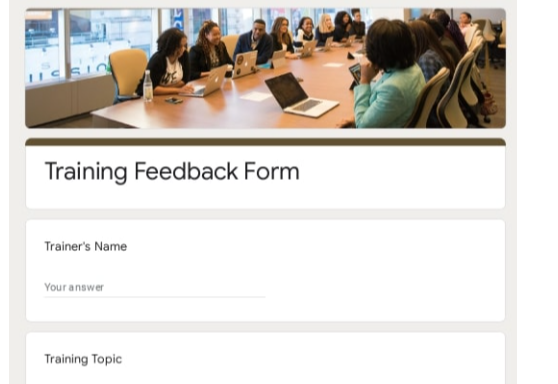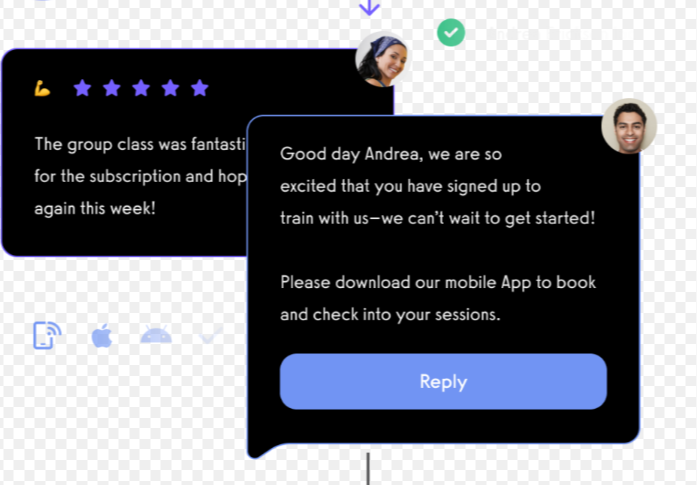I'm a project manager at Brocoders, and I recently dove into how fitness studios can use client ratings to shape what they pay their instructors. A client came to us with a request: they wanted to tie coach salaries to class ratings in a fair, trackable way. That one conversation turned into a deep dive into the world of performance-based pay—what works, what doesn’t, and how smart software can help studios make it all run smoothly.
Why Choose Rating-Based Salaries?
Barry and Shay from Fitness Career Mastery podcast succinctly summarize the primary advantage:
When instructors know their pay depends on ratings, class quality naturally elevates.
This direct link between pay and performance pushes instructors to enhance their class experiences and nurture stronger client relationships. The result is increased client satisfaction, retention, and ultimately, revenue.
One of the most common pitfalls in performance pay is assuming that a full class always equals a great one. But:
Just because the class is full doesn't always mean it's good… most importantly it doesn't mean it's on brand."
That’s why a balanced system—one that includes feedback, not just attendance—is so critical.
You can listen full podcast here
Operational Advantages of Different Rating-Based Compensation Models
Several compensation models are prevalent in today's fitness industry. Each model brings unique operational benefits and potential pitfalls:
1. Base Rate Plus Per-Head Bonus
- Structure: Instructors earn a base rate up to a certain participant threshold, receiving additional bonuses per attendee beyond this number.
- Advantages: Directly incentivizes instructors to maximize attendance and proactively engage clients.
- Pitfalls: Risk of overcrowding and potentially lower service quality if instructors solely focus on filling the room.
2. Tiered Bonus Structures
- Structure: A base rate supplemented by escalating bonuses as attendance milestones are reached.
- Advantages: Clear motivation for instructors to achieve incremental attendance goals, maintaining consistent quality.
- Pitfalls: Complex to manage manually, potentially confusing for instructors if thresholds aren't transparent.
3. Pure Tiered Compensation
- Structure: Salaries increase progressively with defined attendance brackets.
- Advantages: Simplifies salary calculation and directly ties instructor effort to class utilization.
- Pitfalls: Potential dissatisfaction among instructors who narrowly miss thresholds.
4. Utilization-Based Base Rate
- Structure: Instructor base rates are determined by their average attendance metrics.
- Advantages: Promotes consistency in instructor performance and client engagement.
- Pitfalls: Requires robust tracking and analytics; without clear communication, may seem unfair.
Software Solutions Automating Rating-Based Calculations
Expert insights from Easy Flex CRM emphasize the operational efficiency software can deliver:
Automated rating collection ensures consistent client experiences and data transparency, incentivizing higher-quality classes.
When integrating compensation models into software solutions, we typically explore two main approaches:
1. CRM and Survey-Based Systems
- Examples: Easy Flex CRM
- Implementation: Automated NPS surveys distributed via SMS or emails, triggered based on onboarding timelines. Responses directly attribute to instructors, automating performance metrics collection.
- Pros: High data accuracy, transparency, and robust KPI tracking.
- Cons: Slight delay in feedback collection; potential friction due to reliance on survey completion rates.

or

2. Mobile App Rating Prompts
- Examples: Zen Planner, WellnessLiving, custom-developed apps
- Implementation: Immediate post-class rating prompts within mobile apps.
- Pros: Instantaneous feedback, frictionless client experience, and real-time instructor rating metrics.
- Cons: Limited depth compared to comprehensive CRM surveys; may require additional analytics layers.
Custom Implementation for Our Client
For our client, we developed a targeted custom solution focused on immediate implementation needs:
Ratings Pipeline
Our custom-built mobile application prompts members to rate their class experience immediately after each session. These ratings, scored from 1–5 stars, are captured and securely stored.
Custom Admin Panel
We developed a tailored admin panel providing gym management access to all ratings, categorized by coach and timestamp. The admin panel supports exporting these ratings into structured CSV files, enabling easy calculation of monthly average ratings and related bonuses.
Currently, our client calculates instructor bonuses manually based on exported data, following a structure recommended by Pay-for-Performance 101:
| Monthly Average Rating | Bonus on Commissions |
|---|---|
| 4.9–5.0★ | +15 % |
| 4.7–4.89★ | +10 % |
| 4.5–4.69★ | +5 % |
| < 4.5★ | 0 % |
This approach emphasizes monthly averages to mitigate the impact of occasional negative reviews, maintaining instructor morale and fairness.
Proposed Future Enhancements
We have recommended future enhancements to create a comprehensive automated compensation solution:
- Automated Compensation Engine: Integration of ratings with revenue and attendance data to calculate commissions and bonuses automatically.
- Real-time Dashboards: Continuous visibility of projected payouts and personalized insights for instructors.
- One-Click Payroll Export: Further streamlining payroll processes by automatically generating payroll-ready CSV files inclusive of all compensation metrics.
Choosing the Right Software Solution
The ideal solution depends on your studio's operational scale, client demographics, and strategic goals:
- Small to Medium Studios: Mobile app-based rating prompts offer simplicity, real-time analytics, and straightforward payroll automation.
- Larger Studios and Chains: Robust CRM solutions provide deeper insights and comprehensive client success management, ideal for long-term strategic decisions.
Final Thoughts
Automating rating-based salaries not only optimizes payroll operations but also inherently prioritizes client satisfaction, reinforcing instructor accountability and improving overall class quality. As Barry and Shay highlight, the synergy between instructor incentives and client satisfaction is undeniable. Leveraging custom software solutions bridges the gap between complex operational requirements and seamless execution, ultimately benefiting instructors, clients, and studio owners alike.